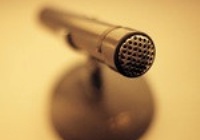
Legislation to Protect Wireless Microphones Introduced in the House
Rep. Bobby Rush (D-1st IL) introduced to the House H.R. 2911, the Wireless Microphone Users Interference Protection Act of 2013, which would set in place certain protections for users of wireless microphones and wireless technologies. The bill asks the Federal Communications Commission to expand eligibility for part 74 licenses to certain wireless microphone users including the performing arts sector, to establish safe haven channels for wireless microphones, and to authorize access by owners and operators of wireless microphones to the TV bands databases for the purpose of protecting wireless microphone operations from interference. The bill was referred to the House Committee on Energy and Commerce. You can read the full text of the bill here.
These are the interference protections available to wireless microphone users, adopted by the FCC:
- The FCC has set aside two national “safe harbor” channels for entities using wireless microphones which are expected to permit 12 to 16 wireless microphones to operate in any one location.
- Additional channels in most markets have been made available by the FCC for wireless microphone use. These channels, which are occupied by or adjacent to broadcast television stations, are unavailable to TV Band White Space Devices.
- If a wireless microphone user needs more than these interference-free channels, it will be permitted to register its uses in a geo-location database which would provide an interference protection mechanism. Registration requires that a user prove that the available channels are insufficient for its needs. The registration must be submitted to the Commission 30 days in advance of the intended use to permit public notice and comment.
- Wireless microphones used in the performing arts will continue to operate under Part 15 as legitimate users of the broadcast spectrum.
Requirements for registration in the geo-location database:
- Performing arts organizations would have to ‘certify’ that they have exhausted the two safe-haven channels and other channels available in their area to participate in the database.
- Performing arts organizations can submit their needs for an entire year (ex: for multiple productions) if needs exceed the safe-haven channels. They should submit requests at least 30 days before their first production.
- Performing arts organizations should only request the channels they actually need; the FCC will not allow the warehousing of channels. Organizations may switch channels if necessary and the database will be quickly updated.
- Performing arts organizations are not competing with each other for spectrum; the database is intended to protect against interference from White Space devices, not from other wireless microphone users. Therefore, wireless microphone users are encouraged to form coalitions and pool their collective wireless microphone needs. If your coalition needs more than the two safe-haven channels and additional channels in your area, you should request the additional channels together. Sound engineers will have to coordinate with each other to eliminate interference within the coalition.

